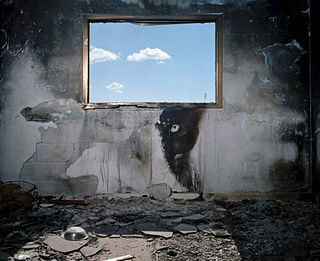Photojournalism in Germany
“The reports of its death are greatly exaggerated …“

While back in the 1960’s German photojournalists were given generous travel and hotel expense accounts, these days scarcely any of them can make a living from the sale of the copyrights to their pictures.
In Germany in the1920’s hundreds of newspapers and magazines were still being published, and Berlin had evolved into one of the world’s most differentiated and variegated media centres. However, the diversity of the German press withered under the pressures of the Second World War and Gleichschaltung (enforced political conformity) of the press by the National Socialists. Only in the 1960’s a second boom of German photojournalism did arise: the most prominent photojournalists of the time, Robert Lebeck, Thomas Höpker, Stefan Moses and Max Scheler, covered the news from Germany and the world for stern, Quick and Kristall – their photo features appeared distributed over a number of magazine issues.
Magnum as model
The photo sequence and the exemplary single picture were the two sides of photojournalism as they still are today. Many of the photos come about from a mix of intuition and random chance - in the “decisive moment,” as Henri Cartier-Bresson once put it. In 1947 he was one of the four founding members of the Magnum photo agency, which exists to this day as one of the highest-profiled photographic cooperatives. Its goal was to provide its members with work conditions offering a greater degree of independence from purchasers as well as improved international marketing for their photographs.
Collective pictorial memory
Some daily newspapers collaborate with the same journalists over many years. Barbara Klemm’s photos have not only defined the politics section and the cultural pages of the Frankfurter Allgemeine Zeitung since 1970, but over and above this have also made a decisive contribution to our collective pictorial memory. She was, so it seems, always in the right place at the right time, to capture – with restraint and focus at the same time – historic moments on her 35mm camera’s black-and-white film. In 1989 she was awarded the Dr.-Erich-Salomon-Prize of the German Photography Association (Deutsche Gesellschaft für Photographie /DGPh) – Germany’s highest award for photojournalism.“The reports of its death are greatly exaggerated …“
To this day, the public has a particular interest in social and politically explosive themes, crystallised into photographic images. Sometimes, through a photographer’s unique perspective, every-day scenes become symbolic images, for instance when in 1970, Willy Brandt knelt down before the Ghetto Heroes Monument in Warsaw – or a documentary becomes an interpretation, for instance a crowd of mourners in Gaza bearing the bodies of two dead children. The photography documents the event and is at the same time a silent outcry against injustice. In 2013, Paul Hanson was distinguished with the World Press Photo Award for his situative depiction. Photojournalism has often been declared dead, for instance when, in the early 1970’s, television advanced to become a mass medium and was in a position to cover up-to-the-minute news much faster, or at the turn of the millennium the internet with its new possibilities of medial distribution took its place, in real-time so to speak, in practically every household. However, daily and weekly newspapers and illustrated magazines do still exist and photojournalism itself is adapting automatically to the different publication media and their content-related contexts: a few decades ago, the issue was the much-discussed transition from black-and-white to colour, a good decade ago that of analogue to digital.digital distribution
In today’s photojournalism speed is of the essence, something which is only possible with digital image data. Discussion about authenticity and ethical and moral permissibility runs like a common thread through the entire history of photojournalism, and not just in Germany. Journalistic and documentary images appear in print format in magazines, medialised in the internet and visualised on monitors, as well as in exhibitions and their accompanying catalogues or in books. For photographers, this expanded, seemingly democratic distribution is both a blessing and a curse. Scarcely any photojournalists can make a living any longer from the sale of the copyrights to their pictures.The exhibition on the 25th anniversary of Ostkreuz, touring internationally, sends us on a journey back into the past, to the time after the fall of the Berlin Wall, and also presents explosive contemporary social and political content such as the Egyptian revolution. Visualised snippets of thoughts and memory are always what a photographer collates into his photo coverage. At one time, a prominent German photo journalist’s definition of a “good” picture was: when it’s printed on a two-page spread. And this has remained basically unchanged to this day.